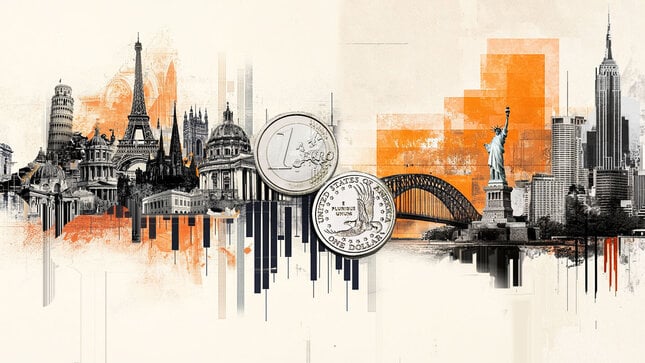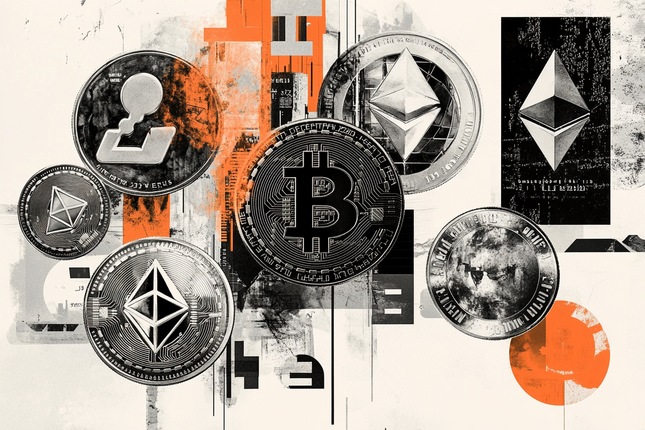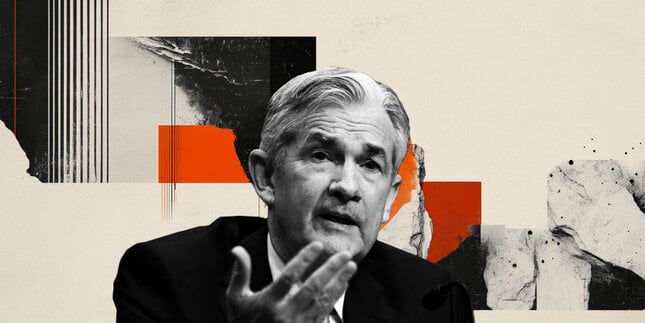Want to invest like Warren Buffett? It’s more than just picking stocks. It’s about understanding core principles that have guided his success. This article delves into three of his core tenets:
- Understanding the difference between price and value.
- Prioritizing exceptional businesses even if they aren’t the cheapest.
- Embracing a contrarian mindset when others are swayed by emotion.
Mastering these principles can provide a powerful roadmap for any investor seeking long-term success.
What does Buffett mean by “price is what you pay; value is what you get”?
Warren Buffett’s saying “Price is what you pay; value is what you get” encapsulates a central principle of value investing. It challenges the notion that markets always correctly price assets and reminds investors that the amount you pay for an investment isn’t necessarily tied to what it’s actually worth:
- A stock priced at $100 may actually be a bargain if the underlying business is worth $300 based on long-term earnings potential and quality.
- On the other hand, a stock trading at $10 could be a terrible investment if the company is only worth $30, riddled with debt, declining revenue, or weak fundamentals.
Therefore, the price of a stock is just a number that reflects the current mood of the market, not necessarily the underlying reality of the business. True value, however, is far more elusive. It represents the intrinsic worth of a company based on its fundamentals (earnings, assets, quality of product/service, management, growth potential, competitive position, future cash flows, etc.).
Determining this intrinsic value is often difficult and sometimes subjective. Valuation involves digging deep into financial statements, understanding industry trends, assessing the quality of management, and projecting long-term performance—none of which can be done with a simple formula.
Markets often misprice assets because they’re driven by emotion, speculation, short-term thinking, and herd behavior. This is where Buffett sees opportunity. He doesn’t assume the market is right; instead, he looks for discrepancies between a company’s real value and its current market price.
In both cases, price tells you what the crowd thinks the company is worth today. But value tells you what the business is really worth, based on deeper analysis. The goal is to invest where the market has gotten it wrong—to pay less than the business is truly worth.
Why should you better “buy a wonderful company at a fair price than a fair company at a wonderful price”?
Very often, investors consider cheap stocks like great opportunities, because they are drawn to low prices, hoping they’ll make big gains when the stock rebounds. But Buffett warns: cheap isn’t always good.
A low price often reflects deeper problems—weak products, declining industry, poor management, high debt, shrinking profits, or an uncertain future. Sure, a few of these “cigar butt” companies (as Buffett calls them) might offer one last puff of value. But most of the time, the growth potential is limited—and the risks are high.
Once you understand that not all cheap stocks are bargains, you can focus on quality by looking for reasons that make a company a “wonderful” one—usually companies with long term strengths that can thrive and provide growth over time.
These companies usually have an “economic moat”—something that protects them from competitors and keeps them profitable over time. They might have a strong brand, management team, or reputation, loyal customers, a proven track record of growing profits, or a reliable business model that might be easy to understand.
- You don’t need to get a super cheap deal on a great business.
- Even paying a fair price for a quality company can be a smart investment—because great companies keep growing.
Over time, that growth compounds and increases the value of your investment. Good businesses are also safer over time because strong companies are usually better at surviving tough times, adapting to change, and bouncing back from setbacks.
What’s the logic behind Buffett’s “be fearful when others are greedy, and greedy when others are fearful” saying?
When Warren Buffett said, “Be fearful when others are greedy, and greedy when others are fearful,” he was teaching us how to use market emotions to our advantage. It’s not about acting on impulse. It’s about thinking independently—and staying calm when the crowd isn’t.
Buffett’s advice is built on the fact that markets rise and fall. Booms lead to busts, and busts lead to recoveries. By watching investor behavior—greed or fear—you can spot when things are getting out of balance.
Just remember to be careful when the market is greedy and to look for opportunities when everyone is fearful:
- When markets are booming and everyone’s making money, investors often get swept up in excitement.
Stocks may rise far beyond their true value because of hype, speculation, or fear of missing out (FOMO) → Buffett warns that this is the most dangerous time to invest. Prices are high, and risks are rising—even if it doesn’t feel like it.
- When the market crashes or bad news dominates the headlines, fear takes over.
People panic, sell off their investments, and run for safety—even if the companies they’re selling are strong → This is when Buffett sees opportunity, as great businesses often go on sale during times of crisis. If you stay calm and think long-term, you can buy valuable assets at a discount—while others are fleeing.
This saying can also be considered as a mental guide to help you do the opposite of what feels natural and how you avoid buying too high and find the courage to buy when prices are low:
- Don’t rush in when everyone’s euphoric, and
- Don’t flee when everyone is panicking.
Buffett doesn’t just react to emotions or news. He always looks at the intrinsic value of a business—its real, long-term worth, and advice to think long term, and not to let emotion make your decisions.
Stay up to date with what's moving and shaking on the world's markets and never miss another important headline again! Check ActivTrades daily news and analyses here.
CFDs are complex instruments and come with a high risk of losing money rapidly due to leverage. 66-79% of retail investor accounts lose money when trading CFDs with this provider. You should consider whether you understand how CFDs work and whether you can afford to take the high risk of losing your money. ActivTrades PLC is authorized and regulated by the Financial Conduct Authority, registration number 434413. ActivTradesPLC is a company registered in England &Wales, registration number 05367727. ActivTrades Corp is authorized and regulated by The Securities Commission of the Bahamas. ActivTrades Corp is an international business company registered in the Commonwealth of the Bahamas, registration number 199667 B. ActivTrades Corp is a subsidiary of ActivTrades PLC. ActivTrades Europe SA, Public Limited Company, is authorized and regulated by the Commission de Surveillance du Secteur Financier (CSSF) in Luxembourg. ActivTrades Europe SA is a company registered in Luxembourg, registration number B232167. ActivTrades Europe SA is a subsidiary of ActivTrades PLC.
Editors’ Picks

EUR/USD rebounds after falling toward 1.1700
EUR/USD gains traction and trades above 1.1730 in the American session, looking to end the week virtually unchanged. The bullish opening in Wall Street makes it difficult for the US Dollar to preserve its recovery momentum and helps the pair rebound heading into the weekend.

USD/JPY rallies to near 157.00 as Yen plunges after BoJ’s policy outcome
The USD/JPY is up 0.85% to near 156.90 during the European trading session. The pair surges as the Japanese Yen underperforms across the board, following the Bank of Japan monetary policy announcement. In the policy meeting, the BoJ raised interest rates by 25 bps to 0.75%, as expected, the highest level seen in three decades.

Gold stays below $4,350, looks to post small weekly gains
Gold struggles to gather recovery momentum and stays below $4,350 in the second half of the day on Friday, as the benchmark 10-year US Treasury bond yield edges higher. Nevertheless, the precious metal remains on track to end the week with modest gains as markets gear up for the holiday season.

Crypto Today: Bitcoin, Ethereum, XRP rebound amid bearish market conditions
Bitcoin (BTC) is edging higher, trading above $88,000 at the time of writing on Monday. Altcoins, including Ethereum (ETH) and Ripple (XRP), are following in BTC’s footsteps, experiencing relief rebounds following a volatile week.

How much can one month of soft inflation change the Fed’s mind?
One month of softer inflation data is rarely enough to shift Federal Reserve policy on its own, but in a market highly sensitive to every data point, even a single reading can reshape expectations. November’s inflation report offered a welcome sign of cooling price pressures.
RECOMMENDED LESSONS
Making money in forex is easy if you know how the bankers trade!
I’m often mystified in my educational forex articles why so many traders struggle to make consistent money out of forex trading. The answer has more to do with what they don’t know than what they do know. After working in investment banks for 20 years many of which were as a Chief trader its second knowledge how to extract cash out of the market.
5 Forex News Events You Need To Know
In the fast moving world of currency markets where huge moves can seemingly come from nowhere, it is extremely important for new traders to learn about the various economic indicators and forex news events and releases that shape the markets. Indeed, quickly getting a handle on which data to look out for, what it means, and how to trade it can see new traders quickly become far more profitable and sets up the road to long term success.
Top 10 Chart Patterns Every Trader Should Know
Chart patterns are one of the most effective trading tools for a trader. They are pure price-action, and form on the basis of underlying buying and selling pressure. Chart patterns have a proven track-record, and traders use them to identify continuation or reversal signals, to open positions and identify price targets.
7 Ways to Avoid Forex Scams
The forex industry is recently seeing more and more scams. Here are 7 ways to avoid losing your money in such scams: Forex scams are becoming frequent. Michael Greenberg reports on luxurious expenses, including a submarine bought from the money taken from forex traders. Here’s another report of a forex fraud. So, how can we avoid falling in such forex scams?
What Are the 10 Fatal Mistakes Traders Make
Trading is exciting. Trading is hard. Trading is extremely hard. Some say that it takes more than 10,000 hours to master. Others believe that trading is the way to quick riches. They might be both wrong. What is important to know that no matter how experienced you are, mistakes will be part of the trading process.
The challenge: Timing the market and trader psychology
Successful trading often comes down to timing – entering and exiting trades at the right moments. Yet timing the market is notoriously difficult, largely because human psychology can derail even the best plans. Two powerful emotions in particular – fear and greed – tend to drive trading decisions off course.
